While anise can be a somewhat polarising flavour, the earthy licorice element works well here as it highlights the bright, juicy citrus character of the orange glaze. Emma Zimmerman first came across this flavour combination when she was developing a more versatile iteration of Spanish olive oil tortas, and she loves it just as much in this context.
Makes 12
WHAT YOU NEED
For the knots
115g unsalted butter
240ml whole (full-cream) milk
560g Heritage Bread Flour
2 tbsp instant dry yeast
100g granulated sugar
2 tsp kosher salt
1 tbsp anise seeds, finely ground
grated zest of 1 large orange (reserve the juice for the glaze)
2 eggs, lightly beaten
2 tsp vanilla extract
For the filling
65g granulated sugar
70g brown sugar
60ml melted unsalted butter
For the glaze
3 tbsp fresh orange juice (top up with water, if needed)
260g powdered (icing) sugar, sifted
WHAT TO DO
Grease a large mixing bowl with butter or oil, ready for proofing the dough, and a 12-hole regular muffin pan. Set aside.
Combine the butter and milk in a medium microwave-safe bowl and microwave on high for 30 seconds. Check the mixture, then return the bowl to the microwave and continue heating in 10-second intervals until the butter has melted. Set aside.
In the bowl of a stand mixer fitted with the dough hook, combine the flour, yeast, sugar, salt, ground anise, and orange zest. Add the warm (but not hot) butter and milk mixture and mix on low speed to combine. Add the egg and vanilla and continue mixing on low speed for another 5 minutes. Remove the bowl from the mixer and use a rubber spatula to scrape the side and base of the bowl to loosen any bits of flour that didn’t mix in. Return to the mixer with the dough hook and continue kneading on low speed for another 10 minutes. The dough should cling to the dough hook and feel smooth to the touch.
Turn out the dough onto a lightly floured work surface and knead for 5 minutes, then place in the prepared mixing bowl and flip the dough so it is coated with oil on both sides. Tightly cover the bowl with airtight wrap and leave to proof in a warm spot in the kitchen for 1–11/2 hours until doubled in size and the dough springs back when poked.
To prepare the filling, combine the two sugars in a small bowl.
Gently punch down the dough and turn it out onto a lightly floured work surface. With a rolling pin, roll out the dough to a 46 cm × 30 cm (18 in × 12 in) rectangle. Brush the surface with the melted butter, then sprinkle the combined sugars evenly over the top.
Starting at the long side closest to you, fold the bottom third of the dough up and the top third down—as if you were folding a letter. Use the rolling pin to lightly flatten the dough, then cut it crosswise into 12 even strips. Working with one strip at a time, use a pastry roller to cut the dough into three equal strips while keeping the top intact. It will look like a three-pronged comb. Braid the three strands together and pinch at the bottom to seal. Roll the braid up towards the uncut end, then place in one of the prepared muffin holes, knot side up. Repeat with the remaining pieces of dough. Tightly cover the pan with airtight wrap and leave to proof in a warm spot for 20 minutes.
Preheat the oven to 175°C.
Remove the wrap, place the pan in the center of the oven and bake for 20–25 minutes until the knots are golden brown on top, rotating the pan after 10 minutes. Remove from the oven and allow to cool completely.
To prepare the glaze, whisk together the orange juice and the powdered sugar in a medium bowl, adding a little water if you need to thin it down slightly.
Spread an even layer of glaze over the cooled buns and serve. These are best eaten on the day of baking.

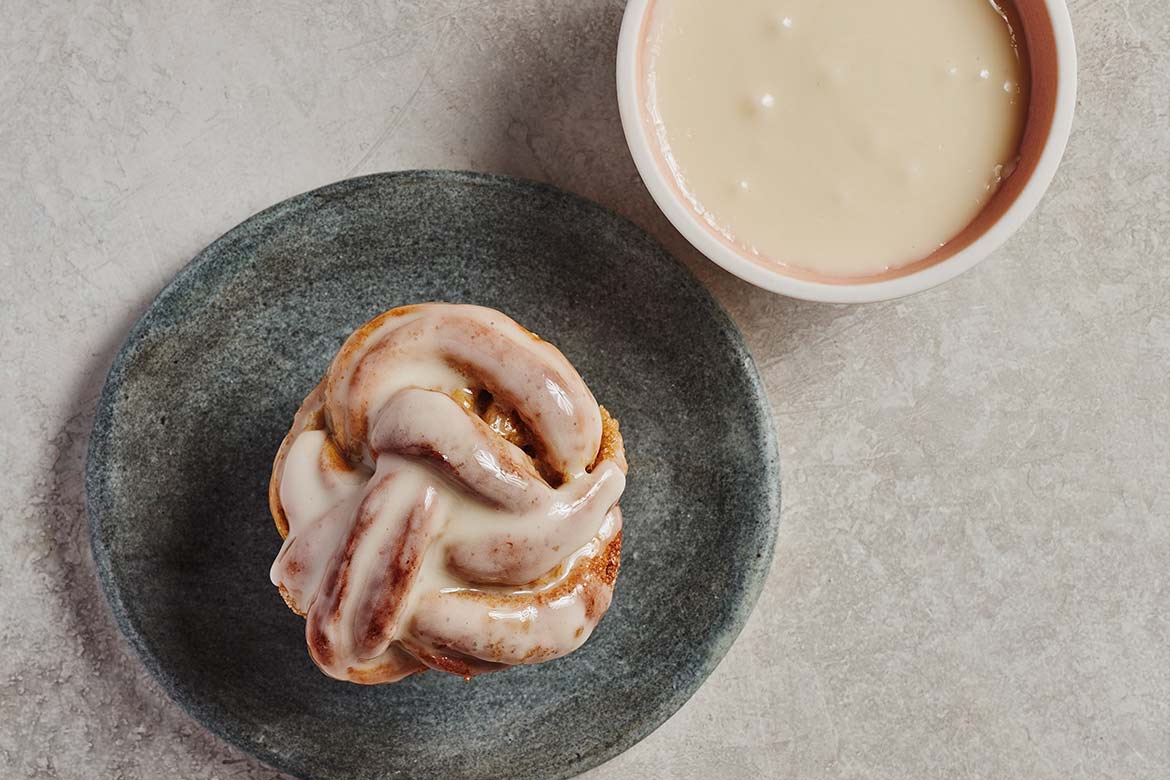
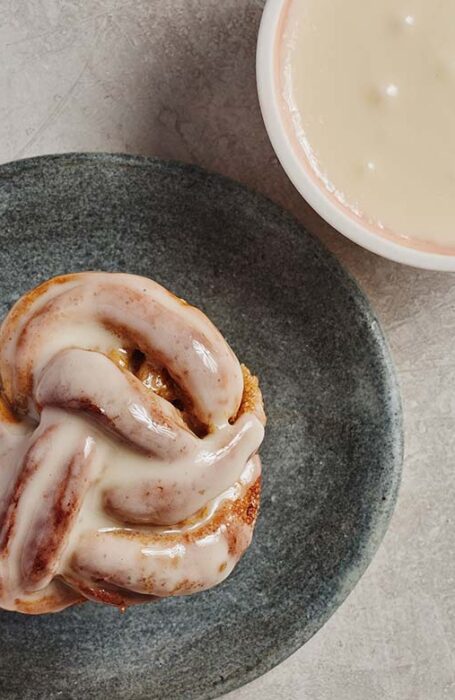
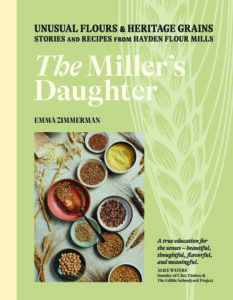
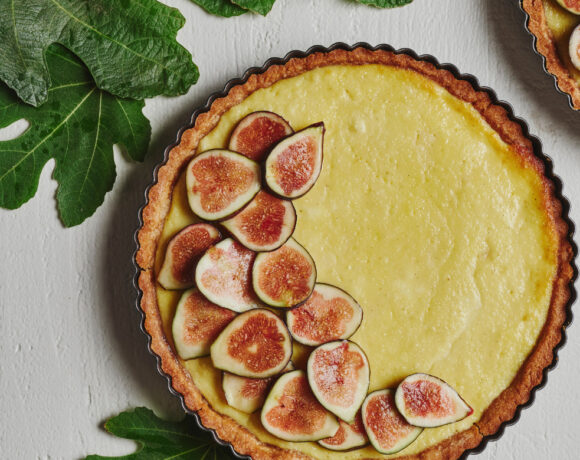
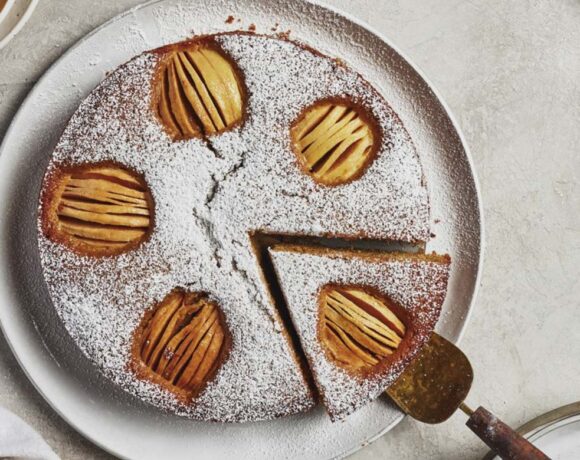


COMMENTS